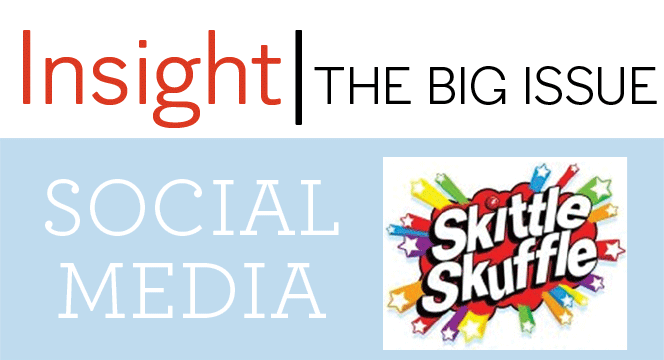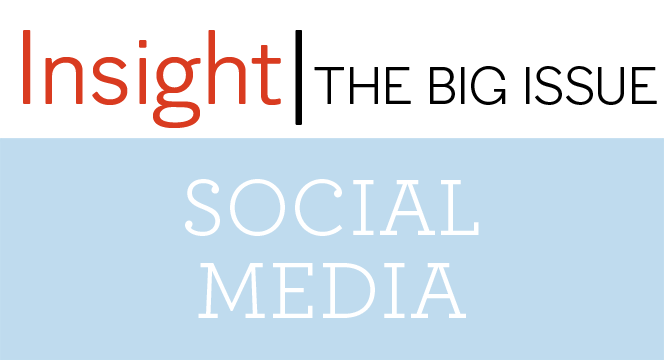Our pick of the best online campaigns from the last few years
 Best Buy Twelpforce
Best Buy Twelpforce
Crispin Porter + Bogusky, Boulder
Twelpforce allows people to ask Best Buy’s employees questions via Twitter. They can get help with product queries, troubleshoot technology challenges and have customer-service issues solved – all from the comfort of their keyboard or mobile phone. Users address their questions to @twelpforce. Responses come back to each user, but other Twitter users can follow the conversation. The service is still in use at the time of writing and won Titanium at Cannes 2010.
twitter.com/twelpforce
 IKEA Facebook Showroom
IKEA Facebook Showroom
Forsman & Bodenfors, Gothenburg
Via a Facebook profile created for Gordon Gustavsson, the store manager of the
Malmö branch of furniture store IKEA, a total of 12 different showroom images were uploaded over a two-week period.
The ‘tag’ function on Facebook was used to enable members of the public to be the
first to tag their name to a product and therefore win it.
fb.se/#/en/Work/448/627/
 BURGER KING Whopper Sacrifice
BURGER KING Whopper Sacrifice
Crispin Porter + Bogusky, Boulder
This 2009 campaign promised Facebook users the reward of a Whopper if they
sacrificed 10 of their ‘friends’. This caused a race among users to delete a friend before being deleted themselves. “What do you love more: your friends or a Whopper?”
Almost 200,000 friends were sacrificed in the first week, so there’s your answer.
Facebook wasn’t exactly happy about the free publicity and eventually forced Burger
King to close the site.
 POSTEN Stefan the Swapper
POSTEN Stefan the Swapper
Åkestam Holst, Stockholm
This campaign saw one guy, the eponymous Stefan, attempt to swap every possession he owned after becoming disillusioned with his life as it was. Via his site,
stefantheswopper.com, you could upload swap offers to Stefan. Ultimately, the site
would take you, to perform a swap, to the Posten – the Swedish post office – Parcel
Guide site. Massively popular, with print, radio and TV coverage, the campaign was a big hit.
akestamholst.se/awards/swooper
 OLD SPICE Twitter Response
OLD SPICE Twitter Response
Wieden + Kennedy, Portland
After the massive success of the Old Spice TV commercials, where actor Isaiah
Mustafa smooths his way through visually brilliant and fantastically written spots, came the Twitter Response arm of the campaign.
For three days, people were able to Tweet or add comments on Facebook that went directly to Mustafa’s character, a selection of which he answered via videos on YouTube.
wk.com/campaign/digital_response/from/old_spice
 NIKE Chalkbot
NIKE Chalkbot
Wieden + Kennedy, Portland
When legendary cyclist Lance Armstrong returned to the Tour de France in 2009 after successfully fighting cancer, Nike was right there with him. Among many other
elements, the revolutionary Chalkbot allowed consumers to Tweet and text to it. It then spray-painted onto the roads of the Tour messages of support or remembrance of loved ones. Authors of printed messages were then sent a GPS-tagged image of their message.
livestrong.org/chalkbot
Don’t be an ASBO brand
“Are you social? Do you get the concept of personal space? Do people involve you in their conversation because you have an interesting view? Or do you stand as close as you can and tell everyone how cool/funny/important/ironic you’re being? To an ASBO brand, it doesn’t matter that no one asked, or wants to know. It’s out there, being ‘social’, getting right in your face(book).
“So let’s assume you don’t want an ASBO; where to start? First off, ‘social’ is not about having a Facebook page and telling people to follow you on Twitter.
That’s like standing outside the school gates in a long, slightly soiled coat with your hands firmly in your pockets. Not a good look.
Secondly, ‘social’ isn’t complicated. It’s any medium where a brand can engage people in a genuine dialogue. The internet, phone, radio, smoke signals and cave paintings are all examples of social media.
“Brands are behaviours. Brands are people. Not logos or fonts. Act like a tool and no one will want to know. Be relevant and genuine, and it’s all good. If you dance like your dad, don’t go to Fabric. Most brands enjoy nothing more than telling the world who they are. Schoolboy error. Who you are is not defined by what you tell people, but by what people decide you are – based on your actual (not advertised) behaviours and their experiences of them.
Social is the space where you can find yourself, but also be found out.
“So it’s not about technology, it’s about attitude. Think about who you are, but first listen – and continue to listen – to what people think of you. Because the time your brand really will be in peril is when you stop.”
James Hilton is the chief creative officer and co-founder of AKQA
Connections
powered by
- Unspecified role Forsman & Bodenfors
- Unspecified role Crispin Porter + Bogusky
- Unspecified role Wieden+Kennedy Portland
- Unspecified role James Hilton
Unlock this information and more with a Source membership.







